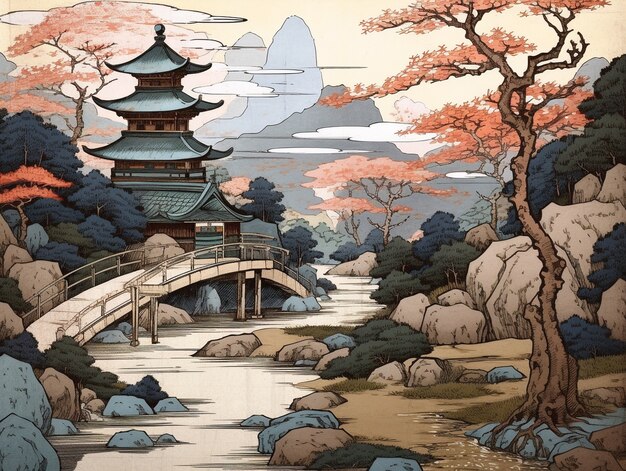
Sponsored article
Inspired by centuries-old techniques, Japanese gardens portray a sense of tranquillity and peace that you can recreate in your outdoor space. This guide will unveil the beauty of traditional Japanese aesthetic principles, and how they integrate with natural elements like rocks, water, and plants. In addition, you’ll learn straightforward steps on designing, planning, and maintaining your serene Japanese garden to ensure it remains an oasis of calm and beauty.
In sculpting a serene garden inspired by Japanese aesthetics, three main Japanese Garden Elements emerge as crucial: Rock, Water, and Plant Elements. Rocks, carefully chosen for size and form, are arranged to portray a variety of landscapes, from mountains to flowing rivers. These rock arrangements not only contribute to the overall aesthetic but also promote tranquility through their inherent solidity.
Water, the life-blood of a garden, personifies purity and serenity in traditional Japanese gardens. Water features are consciously designed, whether as tranquil ponds or gentle streams, reflecting the ever-changing seasons and promoting a calm ambiance. Lastly, plant elements, meticulously selected and pruned, infuse the garden with life. The verdant tapestry of traditional evergreens combined with seasonally blooming plants not only enhances the garden’s aesthetic appeal but also strikes a balance with the rock and water elements, creating a perfect, tranquil sanctuary.
The art of creating a serene garden often revolves around three central Japanese aesthetic principles: Simplicity, Naturalism, and Suggestion. Embracing Simplicity in a Japanese meditation garden calls for minimalist design, focusing on a few distinct elements rather than a cluttered array of various items.
Naturalism is achieved by using native plants and natural elements that harmonize with the local environment, contributing to an authentic, serene garden. The principle of Suggestion refers to the idea of implied beauty. Instead of detailing every aspect, let part of the garden be left to the imagination of the viewer. Through implementing these values of Simplicity, Naturalism, and Suggestion, any outdoor space can embody tranquility found in traditional Japanese aesthetics.
Begin the journey of designing your tranquil Japanese garden by studying traditional elements commonly seen in these serene landscapes. Planning is crucial, so create a detailed layout prioritizing balance, simplicity and natural beauty. Consider incorporating elements such as water, stone layouts, lanterns or even a small bridge. Once your design is ready, start implementing it. Be sure to consider the seasonal changes your selected plants will undergo.
Once your garden is in place, maintaining it becomes paramount. Regular upkeep, such as pruning and cleaning, helps maintain the inherent tranquillity of this space. A well-maintained Japanese garden evolves gracefully with time, its serene atmosphere deepening as the seasons pass. This ongoing care isn’t just about preservation, it’s a form of mindful meditation, enhancing not just the garden’s aesthetic but your personal peace and calm too.